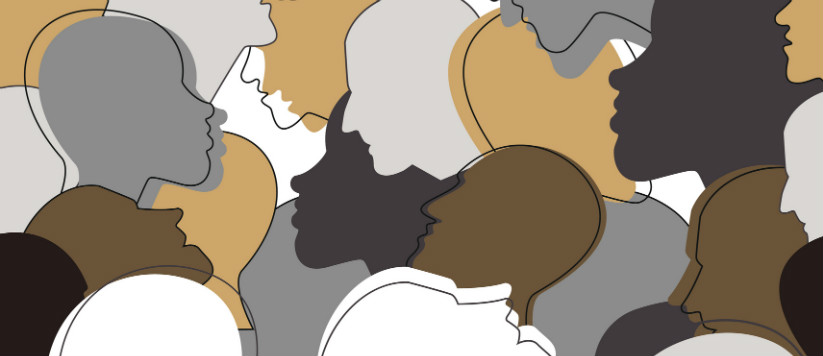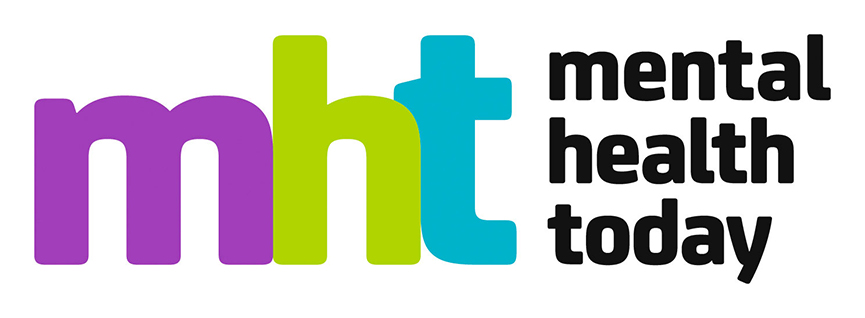Do you identify as having a disorder, or as having survived something?
Some people find direction through diagnosis. Others are damaged when their feelings are not understood as a response to surviving something. An alternative approach to the 'disorders model' is being finalised.

Have you ever wondered whether you have a mental health disorder? Has it ever been suggested that you have one? Perhaps you’ve been given a diagnosis. Perhaps you ‘diagnosed yourself’ after seeing symptoms online that squared with behaviour, thoughts or feelings you recognised in yourself.
"Often the people who most want a diagnosis, to make sense of sensations in their mood or to help regulate their feelings through medication or therapy, find it the hardest to access a psychiatrist. In contrast, the rates of people being detained for diagnosis and treatment against their will is soaring."
One in four of us display behaviour ever year that, if we were to seek referral to a psychiatrist, would lead to us being diagnosed with a mental health disorder. You may or may not know where this ‘one in four’ statistic comes from. The answer is that social researchers do household surveys on around 13,000 people in the UK once every seven years. They then extrapolate the findings out to give a picture for the whole country. It tends to produce the ratio of 1:4.
Only one in eight Brits have actually received a diagnosis from a psychiatrist. Some people seek a referral to a psychiatrist. Others end up with a diagnosis after meeting a psychiatrist in unexpected circumstances. Often a suicide attempt leads to a concerned relative or friend calling 999, culminating in a psychiatric review. In other scenarios an argument in the street, or behind closed doors but overheard by neighbours, may see police detain someone again their will under mental health act legislation. This can also culminate in a review with a psychiatrist leading to a disorder diagnosis.
Often the people who most want a diagnosis, to make sense of sensations in their mood or to help regulate their feelings through medication or therapy, find it the hardest to access a psychiatrist. In some parts of the country there are just four qualified psychiatrists for every 100,000 children. In contrast, the rates of people being detained for diagnosis and treatment against their will is soaring. It has increased by 40 percent in the last decade.
Last month Mental Health Today had a conversation with a trainee psychologist undertaking a work placement as part of their degree. He was dismayed that an Iranian man in the hospital he was working in had been diagnosed with schizophrenia after mentioning being on a wanted list in his home country for subversion.
Discrediting fear, frustration and trauma
It is an unverifiable example, but an example nonetheless, of how plausible experiences can potentially be discredited by psychiatrists. The psychologist believed the patient and thought the intense frustration he was presenting with was indicative of being profiled, once by his state and once by his adopted country’s doctors, rather than, as the psychiatrist argued, indicative of a psychotic disorder.
The trainee psychologist is already having doubts about the career he has chosen for himself. He is concerned that psychiatric diagnoses are dispensed to in-patients before psychologists are introduced. He is not alone. The Division of Clinical Psychology has been working for five years on an alternative approach to responding to patterns of behaviour. It is almost finished. It has at its heart the principle of validating the experiences that have led up to a change in an individual’s behaviour.
Power, Threat, Meaning
The new framework, tentatively shared for the first time in January, is called the Power Threat Meaning Framework. Rather than depict and organise everything under the catch-all term ‘disorders’, a term many members of the movement would like to see dropped altogether, it is suggested that the work of mental health professionals is concerned with three non-biological manifestations: emotional distress; unusual behaviour; troubling or troubled behaviour.
The research team say that all of these manifestations (traditionally recognised as mental illness) are caused not by the vague mix of biological, psychological and social factors so often leant on, but instead can – and should – be narrowed down to seven influences:
- Surviving rejection, entrapment, and invalidation
- Surviving insecure attachments and adversities as a child and young person
- Surviving separation and identity confusion
- Surviving defeat, entrapment, disconnection and loss
- Surviving social exclusion, shame, and coercive power
- Surviving single threats
- Identities
The Power Threat Meaning framework, in its own words, “allows for the existence of widely varying cultural experiences and expressions of distress” as an alternative to understanding them as disorders.
Risk and reward
Whether you support this approach over the existing model of mental health hospitals might depend, among other factors, on your attitude to risk. A recent study by Warwick University established that at least four mental health trusts in England routinely ‘screen’ all their patients to evaluate their susceptibility to ‘become terrorists’. It is naive to assume that all mental health professionals see their first duty as being to protect the individual from their own thoughts and feelings; that is not history’s pattern of mental health care responses. All NHS Trusts receive a daily anti-terrorism update from the Home Office. Old habits die hard.
Thankfully empathy towards people with mental health needs is generally improving, despite the challenges. Shedding disorder-based systems might be the last taboo – an unequivocal acknowledgment that what you are going through is a response to surviving something.
Proponents of the new approach include the feminist social worker Dr Akima Thomas. She is the founder and clinical director of the Women and Girls Network, a holistic therapeutic service working with women and girls who have survived abuse including rape and gendered violence. Such individuals are too often disbelieved; response behaviour is often pathologised. Speaking at a ‘Drop The Disorder’ event in Brighton earlier this year, Dr Thomas argued persuasively about how a degree of rebellion, as a response, should be encouraged by mental health professionals, rather than supressed, to aid recovery.
Dr Thomas speaks with gravitas. Females are three times more likely to be diagnosed with personality disorder than males. Minorities are five times more likely to be diagnosed with a psychotic disorder and four times more likely to be detained against their will.
Under the Power Threat Meaning Framework, mental health professionals are encouraged to recognise “threat responses” rather than “disorder symptoms”. If someone has survived rejection, entrapment and invalidation, to take one of the seven examples listed above, the framework says their threat responses are likely to include:
- Regulating overwhelming feelings: e.g. through dissociation, amnesia, disrupted attention, de-realisation, emotional numbness, bodily numbness, hearing voices, drug and alcohol use, self-harm, impulsivity, somatic sensations, splitting and projection of feelings, rapid changes of mood, unusual beliefs, suicidality
- Protection against attachment loss, hurt and abandonment: e.g. dominance and seeking control, distrust, vigilance for rejection, rejection of others, isolation/avoidance of others, self-silencing, self-hatred, self-blame, appeasement, compliance.
- Protection from danger: e.g. hypervigilance, anger and rage, anxiety, suspicious thoughts
Groups hold diversity of thoughts
A comprehensive analysis of the disorder diagnosis experience overseen by the University of East Anglia found that opinions of those living with a diagnosis are split on whether they have found traditional diagnosis a liberating or alienating experience.
Many would worry about losing prescriptions or access to benefits if the disorder framework was to disappear overnight. Others would worry about losing some sense of self and group identity through being stripped of their diagnosis. This could arguably be replaced through the Power Threat Meaning Framework, however. Survivor movements are unifying, healing and far from untested hypotheses for recoveries.
No research participant has even said they enjoy emotional distress, whatever their views might be on what it is called or how it is best treated. One of the most compelling claims accompanying the Power Threat Meaning Framework is the argument that it can be applied to predict distress, rather than merely pick up the pieces. That’s something worth pursuing.
Show your support for what you’ve read today. Enable us to keep finding and sharing the ideas that will better shape tomorrow’s mental health care.
Donation Information

Comments
Write a Comment
Comment Submitted